"Man, Myth, and Sensual Pleasures: Jan Gossart's Renaissance" @ Metropolitan Museum of Art, NY
Jan Gossart (Netherlandish, ca. 1478–1532). Portrait of a Man (Jan Jacobsz. Snoeck?), ca. 1530. National Gallery of Art, Washington
The first major exhibition in forty-five years devoted to the Burgundian Netherlandish artist Jan Gossart (ca. 1478-1532) brings together Gossart's paintings, drawings, and prints and places them in the context of the art and artists that influenced his transformation from Late Gothic Mannerism to the new Renaissance mode. Gossart was among the first northern artists to travel to Rome to make copies after antique sculpture and introduce historical and mythological subjects with erotic nude figures into the mainstream of northern painting. Most often credited with successfully assimilating Italian Renaissance style into northern European art of the early sixteenth century, he is the pivotal Old Master who changed the course of Flemish art from the medieval craft tradition of its founder, Jan van Eyck (ca. 1380/90–1441), and charted new territory that eventually led to the great age of Peter Paul Rubens (1577–1640).
In the early sixteenth century, the Burgundian-Habsburg Netherlands—a geographical area that once encompassed present-day Belgium, Holland, and parts of Germany and France—experienced the rise of humanism, the birth of the Reformation, and constant struggles of territorial expansion among the ruling dynasties of Western Europe. The future Holy Roman Emperor Charles V was born in Ghent in 1500. After the untimely death of his father, Philip the Fair, in 1506, he was raised by his aunt, Margaret of Austria, governor general and regent of the Netherlands, who held court in Mechelen. The economic power of Bruges was waning as Antwerp assumed new prominence, and artists traveled from place to place to establish a livelihood in the burgeoning art markets of the major Northern cities.
Among the most innovative artists of this period was Jan Gossart (ca. 1478–1532), also known as Jenni Antwerpen, Jennin Gossart, Mabuse, and Johannes Malbodius. The latter two of these sobriquets indicate his town of origin, Maubeuge, today in northern France. In 1503 Gossart joined the painters' guild in Antwerp, where he trained two apprentices. His sojourn in Rome in 1508–9 in the entourage of Philip of Burgundy, illegitimate son of Duke Philip the Good, on a diplomatic mission to Pope Julius II, brought him fame.
He was one of the first Northern artists to experience firsthand the art of antiquity, to make drawings after Greek and Roman sculpture and monuments, and to assimilate this new awareness of the ancient world into his work. Gossart was much heralded at the time for introducing to Northern art depictions of biblical and mythological subjects (historie and poesie) with nude figures. At the humanist courts where he worked—in particular, for Philip of Burgundy—he was lauded as the "Apelles of our age," comparing him to the most famous painter of antiquity. Influenced by his pivotal trip to Rome, Gossart redirected the course of early Netherlandish painting from the legacy of its founder, Jan van Eyck, and charted new territory that eventually led to the great age of Peter Paul Rubens.
The current exhibition is the first reappraisal in more than forty-five years of the extraordinary achievements of this versatile master. Viewed in the context of his contemporary milieu, Gossart is celebrated as an artist of unsurpassed skill and remarkable originality. Technical examinations of the majority of his works have informed a reconsideration of his innovations as a painter, draftsman, and printmaker
A Master in Antwerp
Gossart is documented as having come from Maubeuge, a town originally in the medieval county of Hainaut, which was ceded to France at the Peace of Nijmegen in 1678. The details of his early training as a painter remain obscure; we first learn of him when he became a master in the Antwerp Guild of Saint Luke in 1503 under the name of Jennyn van Hennegouwe, or Jan of Hainaut. The guild records also relate that Gossart took on two apprentices, Henne Mertens (possibly Jan Mertens [Van Dornicke]) in 1505 and Machiel in't Swaenken in 1507, two artists about whom virtually nothing is known. Curiously, almost no paintings by Gossart may be assigned to his Antwerp years. Rather, it is to his drawings that we must look for his virtuosity as a key proponent of Antwerp Mannerism, particularly to The Emperor Augustus and the Tiburtine Sibyl, which best expresses Gossart's extraordinary skills at this stage of his career.
Jan Gossart (Netherlandish, ca. 1478–1532), The Emperor Augustus and the Tiburtine Sibyl, ca. 1503–9, Pen and brown ink. Staatliche Museen zu Berlin, Kupferstichkabinett
No other work by Gossart provides a better idea of his Antwerp Mannerist phase, characterized by exaggerated yet somewhat wooden gestures; elaborate architecture featuring loggias, towers, and other fanciful constructions; fantastic costumes with fluttering draperies; and a tendency to fill every empty space with ornament and hatching. Notwithstanding the crowded composition, Gossart managed to retain an admirable clarity. The subject, popular among Antwerp artists of the period, depicts members of the Roman senate desiring to deify the Roman emperor Augustus, who modestly turned to the sibyl of Tivoli to find out if anyone greater than he would ever be born. The sibyl pointed to the sky, where a vision of the Virgin holding the Christ Child appeared, and spoke: "This child is greater than you, and it is he that you must worship." The chained bear at lower right may be a symbol of converted paganism.
Gossart's Trip to Rome, 1508–9
From such relatively commonplace beginnings in Antwerp, it is not easy to imagine exactly how Gossart came to the attention of Philip of Burgundy, illegitimate son of Duke Philip the Good and admiral of the Burgundian navy. In any event, Gossart found himself in an entourage of sixty men accompanying Philip on an important diplomatic mission at the behest of Margaret of Austria, regent of the Netherlands, to Pope Julius II in Rome. The group set out on October 26, 1508, and, having made stops in Trent, Verona, Mantua, and Florence along the way, arrived in Rome on January 14, 1509.
The goal of the mission was to convince the pope to allow Burgundian rulers to appoint church offices in the Low Countries—a privilege that had been his alone. At hand was the risky matter of balancing power between the papacy and the Burgundian authorities. For this mission, Margaret chose Philip of Burgundy, a consummate diplomat with a humanist education, military accomplishments, and a keen interest in ancient architecture—also an interest of the pontiff's. Philip and Julius found common ground and delighted in each other's pursuits. Meanwhile, Gossart was busy exploring the world of antiquity and recording it for himself and for Philip. (The surviving drawings from that trip are presented in the exhibition.) As Philip's secretary and chaplain Gerard Geldenhouwer wrote in his account of the mission: "Nothing pleased him [Philip] more when he was in Rome than those sacred monuments of antiquity that he commissioned the distinguished artist Jan Gossart of Maubeuge to depict for him."
Jan Gossart (Netherlandish, ca. 1478–1532), View of the Colosseum Seen from the West, 1509 (or slightly later?). Pen and two shades of brown ink, over black chalk. Staatliche Museen zu Berlin, Kupferstichkabinett
Gossart's interest in antique architecture is apparent in many of his works, but this drawing is his only known study after an actual building. Rome's famous amphitheater is seen in what appears to be one of the earliest reliable depictions of the site. The attention he paid to details of the architecture made Gossart lose sight of the overall proportions of the imposing structure but resulted nonetheless in an attractive, somewhat eccentric vision of the Colosseum. He included the vegetation growing from the building as well as the surrounding landfill, which was cleared in the nineteenth century. The sixteenth-century inscription, in Dutch—"Drawn by Jennin Mabuse's own hand in Rome at the Colosseum"—is not autograph but documents that the drawing was recognized early on as an important testimony of Gossart's trip to Rome.
Jan Gossart (Netherlandish, ca. 1478–1532), The Apollo Citharoedus of the Casa Sassi, 1509. Pen and brown ink, over black chalk. Gallerie dell'Accademia, Venice
Gossart must have seen the antique statue of a lyre-bearing Apollo in the courtyard of the house of the Sassi family in Rome, depicted by Maarten van Heemskerck in a drawing. The second-century-B.C. basalt sculpture was later acquired by the Farnese family and is now at the Museo Archeologico Nazionale di Napoli. When Gossart saw it, the entire left and the upper part of the right arm were missing. He completed the statue, thereby emphasizing the femininity of the figure, which at the time was considered to represent Hermaphroditus, the half-man, half-woman Greek deity. Gossart used the pose of the upper body in this drawing for a painting of Hermaphroditus and the nymph Salmacis.
Jan Gossart (Netherlandish, ca. 1478–1532), Standing Warrior in Fantastic Armor, ca. 1509 (or slightly later?). Pen and two shades of black ink, over black chalk. Städel Museum, Frankfurt
This soldier in fantastic armor probably dates from during or directly after Gossart's trip to Rome, when he was freshly under the impression of antique sculpture and of modern Italian depictions of soldiers dressed all'antica. It can hardly be called classical, however, and is at least as indebted to Northern ornamentation and the artist's imagination. The drapery and the liveliness of the hatching are comparable to Gossart's The Emperor Augustus and the Tiburtine Sibyl.
Jan Gossart (Netherlandish, ca. 1478–1532), Sheet with a Study after the "Spinario" and Other Sculptures, 1509 (or slightly later?). Pen and grayish brown ink. Universiteitsbibliotheek Leiden, Prentenkabinet
The statue depicted at center is the celebrated Hellenistic bronze known as the Spinario ("Thorn-Puller"); a sixteenth-century replica is included in the exhibition. Gossart certainly worked from the original, which, then as now, is at the Palazzo dei Conservatori in Rome. The sandaled foot at the right is from a statue of a genius (Museo Archeologico Nazionale di Napoli). Although the drawing gives the impression of being a random collection of studies after antique sculpture, the symmetrical composition and precise execution suggest that it was based on earlier studies made on the spot. Throughout his career, Gossart used such studies as a source of inspiration in later works.
Attributed to Antonello Gagini (Italian, 1478–1536), Spinario, ca. 1507–9. Bronze, traces of gilding. The Metropolitan Museum of Art, New York, Gift of George and Florence Blumenthal, 1932 (32.121)
Among the most popular, frequently copied antique statues in Rome, the Spinario (circa first century B.C.; was known by the twelfth century at the Lateran Palace, once called the Palace of the Popes. It formed part of the 1471 gift by Pope Sixtus IV of the Lateran bronzes to the Palazzo dei Conservatori, where Gossart saw and copied it. The present work, attributed to the Sicilian sculptor Gagini, is a close copy of the original made about the same time that Gossart would have studied it himself.
Bruges and Collaboration
When Gossart returned from Rome in 1509, he settled in Middelburg, the main city on the island of Walcheren, in Zeeland. There, he was admitted to the Brotherhood of Our Lady, married Margriet s'Molders, and raised three children. Gossart's decision to settle in Middelburg likely was based on its proximity to Souburg, the site of Philip of Burgundy's castle. Philip does not, however, appear to have employed Gossart regularly until about 1515–16, and little is known of the artist's whereabouts between 1509 and 1515. A close look at the paintings he made during this time suggests that he led a somewhat peripatetic existence, taking on important commissions in Geraardsberghen, near Brussels (Adoration of the Kings for the chapel of Our Lady in the abbey church of Saint Adriaan); in Mechelen (Saint Luke Drawing the Virgin for the chapel of the painters' guild at Saint Rombouts); and especially in Bruges, where he collaborated with Gerard David, the leading local artist. Rich in the legacy of Jan van Eyck, the celebrated court painter to Duke Philip the Good and the "founder" of early Netherlandish painting, Bruges was a thriving center for manuscript illumination and panel painting. It offered an ideal location for Gossart to continue to perfect his technique and attract new business. As some of his clients had conservative tastes, Gossart had to balance their interests with his inclination toward the new "Romanist" style he had learned in Rome.
Jan Gossart (Netherlandish, ca. 1478–1532) and Gerard David (Netherlandish, ca. 1455–1523), The Malvagna Triptych, ca. 1513–15.. Recto: Virgin and Child with Musical Angels and Saints Catherine and Dorothy. Oil on panel. Galleria Regionale della Sicilia, Palazzo Abatellis, Palermo.
Jan Gossart (Netherlandish, ca. 1478–1532) and Gerard David (Netherlandish, ca. 1455–1523), The Malvagna Triptych, ca. 1513–15. Verso: Adam and Eve. Oil on panel. Galleria Regionale della Sicilia, Palazzo Abatellis, Palermo.
The Malvagna Triptych, among Gossart's most prized works, is his only surviving intact triptych. The patron may have been Antonio Siciliano, whose name suggests that he came from Sicily, where the altarpiece was known by about 1600. Siciliano could have acquired this work as well as The Doria Pamphilj Diptych (on view in the exhibition) when he came to the Low Countries on a diplomatic mission from Milan in 1513. Gossart invented the composition, with its extraordinary High Gothic canopy over the Virgin and Child, added the loosely painted musical angels, and signed it on the step beneath the Virgin's throne. Recent technical examination, however, has shown that the Virgin and Child and the heads of the female saints were painted by Gerard David, the leading master in Bruges. The heads in David's Virgin among Virgins miniature (on view in the exhibition) show these popular types. This sort of collaboration between artists of equal stature was not uncommon at the time.
Philip of Burgundy and Court Patronage
Philip of Burgundy (1464–1524), with whom Gossart had traveled to Rome, was particularly favored by the Burgundian-Habsburg court. He was appointed to the important posts of admiral of the Burgundian fleet (1502–17) and bishop of Utrecht (1517–24). Beginning about 1515 he strove to establish a humanist court at each of his two castles—first at Souburg, on the Island of Walcheren, and then at Wijk bij Duurstede, near Utrecht. As Philip's court poet and biographer Gerard Geldenhouwer wrote, he invited such illustrious artists as the Venetian Jacopo de' Barbari and Jan Gossart to Souburg to decorate his castle, calling them the "Zeuxis and Appelles of our time," a reference to the most heralded artists of antiquity.
Working as Philip's court artist, Gossart made numerous paintings of erotically charged mythological themes, such as Venus and Cupid, Hercules and Deianira and Hermaphroditus and Salmacis. Among the most monumental and important of these works was Neptune and Amphitrite (Staatliche Museen zu Berlin), which Gossart signed in 1516 for the first time using the Latinized form JOANNES MALBODIVS PINGEBAT. It is the earliest representation of the theme with colossal nude figures in Northern European painting. As admiral of the Burgundian fleet, Philip saw himself as Neptune, the god of the sea. By adding his signature and motto "More to come" in a seemingly impromptu script at the upper right, Philip identified himself with Neptune and with the art of antiquity, merging past and present.
Jan Gossart (Netherlandish, ca. 1478–1532), Christ in the Garden of Gethsemane, ca. 1510. Oil on panel. Staatliche Museen zu Berlin, Gemäldegalerie
In one of the most carefully observed and naturalistic moonlit scenes painted in the early sixteenth century, a youthful Christ kneels in prayer, tearfully contemplating the chalice and host before him—symbols of his imminent sacrifice on the cross. Following the account in Luke 22:40–45, the disciples Peter, John, and James sleep nearby, as the menacing crowd of soldiers advances from the right background to arrest Christ. Fragments of a prayer on the border of Christ's robe petition God for mercy and ask for guidance in matters of daily life in preparation for the desired heavenly reward of eternal life. The triptych, formed by this painting and the outer wings representing Saint Jerome, likely adorned an altar in a chapel or a church where the Eucharist was celebrated and the prayer was regularly recited.
Jan Gossart (Netherlandish, ca. 1478–1532), Saint Jerome Penitent, ca. 1510. Oil on panel. National Gallery of Art, Washington (1952.5.40a–b)
This panel, in muted tones of gray, or grisaille, once formed the outside wings of a triptych, the centerpiece of which is Christ in the Garden of Gethsemane. Instead of representing the fictive sculptures in a niche, Gossart executed a sequential narrative within a forbidding uninterrupted landscape across two panels. Saint Jerome kneels in prayer before an image of the crucified Christ; nearby are his cardinal's hat and robe and his companion, the lion. In the middle ground are episodes from the account of the saint's life from The Golden Legend: the theft of the donkey and Jerome extracting a thorn from the lion's paw. The saint's figure and draperies are as sharply defined and sculpturally rendered as the flinty masses of rock. The thick paint is handled with remarkable versatility and deftness, with virtuoso passages of wet-in-wet brushwork, feathering the strokes to soften contours of forms and scratching to define textures.
Jan Gossart (Netherlandish, ca. 1478–1532), Hercules and Deianira, 1517. Oil on panel. Barber Institute of Fine Arts, University of Birmingham
Hercules and Deianira stare lovingly into each other's eyes, their interlocking legs a sign of their conjugal bliss. For the poses of the figures Gossart considered Jacopo de' Barbari's Cleopatra engraving (British Museum) and also recalled Jacopo Ripanda's Neptune and Amphitrite, a fresco that he saw in the Palazzo dei Conservatori in Rome, where he made a drawing of the Spinario. Hercules has put down his club, resting from the labors and events represented in small panels below: killing Antaeus, with the Hydra of Lerna, wearing the skin of the Nemean lion, cleaning the Augean stables, and holding the world for the giant Atlas. Deianira sits on the tunic that will later cause her husband's demise.
Jan Gossart (Netherlandish, ca. 1478–1532), Venus, ca. 1521. Oil on panel. Pinacoteca dell'Accademia dei Concordi, Rovigo
Derived from antique sculptures of the Venus pudica type and based on studies of ideal proportions, this beautiful young woman admires herself in a mirror. Gillyflowers, symbolic of loving couples, sit in a golden antique urn with rams' heads. On the steps at lower right are Cupid's bow and arrows in a quiver and the feathered helmet of Mars, suggesting that the god awaits Venus in an upstairs room for a lovers' tryst. Paintings of mythological nudes portrayed with erotic overtones are found in the inventories of Philip of Burgundy's belongings at his Wijk bij Duurstede residence. Gerard Geldenhouwer, Philip's court poet, praised him for commissioning artists to paint "the ever so sweet adultery of Venus with Mars."
Jan Gossart (Netherlandish, ca. 1478–1532), Venus and Cupid, 1521. Oil on panel. Musées Royaux des Beaux-Arts de Belgique, Brussels
Venus restrains her son from pulling an arrow from his quiver and shooting it into an unwitting god or mortal, thus inciting a love affair. This painting is the only one by Gossart that remains intact, with both its external and internal frames. The external frame, with the ironic commentary on the suppression of desire, could be removed for viewers who wished to enjoy the work solely for its more erotic content. Philip of Burgundy apparently owned a number of such works that could be experienced in two ways. The prints by Raimondi and Lucas van Leyden on view in the exhibition may have been sources for the classicizing female nude. However, even more visually compelling for Gossart's dramatic rendering of his Venus in the round is the Lucretia attributed to Conrad Meit. Both figures share a similar twist of the body and a subtle modeling of the soft, luminous flesh, accentuated with folds at the belly.
Conrad Meit (German, 1480s–1550/51), Lucretia, 1500–1515, Boxwood. The Metropolitan Museum of Art, New York, Gift of J. Pierpont Morgan, 1917 (17.190.582)
As the patron saint of painters, Luke is usually shown in his atelier sketching the Virgin and Child sitting before him. Here, however, the saint kneels at a prie-dieu in a Renaissance hall with a tempietto adorned by a statue of Moses holding the Ten Commandments. The Virgin and Child appear as a vision, supported by putti that prepare to crown the Virgin as Queen of Heaven. The early 1520s was a time of growing religious tension, when the Protestant theologian Martin Luther preached against religious imagery. Gossart's pictorial strategy offered an argument against iconoclasm. Saint Luke, the angel, and Moses with the Old Testament law against idol worship are arranged along the same vertical axis. Because an angel guides Luke's drawing hand, the image is created as a result of the spiritual guidance of God and therefore sanctioned. This painting is among Gossart's most magnificent, demonstrating his sophisticated assimilation of Italian Renaissance architecture and decoration merged with the illusionistic effects produced by his extraordinary Northern technique and meticulous execution.
Jan Gossart (Netherlandish, ca. 1478–1532), Saint Luke Drawing the Virgin, ca. 1520–22. Oil on panel. Kunsthistorisches Museum, Gemäldegalerie, Vienna
As the patron saint of painters, Luke is usually shown in his atelier sketching the Virgin and Child sitting before him. Here, however, the saint kneels at a prie-dieu in a Renaissance hall with a tempietto adorned by a statue of Moses holding the Ten Commandments. The Virgin and Child appear as a vision, supported by putti that prepare to crown the Virgin as Queen of Heaven. The early 1520s was a time of growing religious tension, when the Protestant theologian Martin Luther preached against religious imagery. Gossart's pictorial strategy offered an argument against iconoclasm. Saint Luke, the angel, and Moses with the Old Testament law against idol worship are arranged along the same vertical axis. Because an angel guides Luke's drawing hand, the image is created as a result of the spiritual guidance of God and therefore sanctioned. This painting is among Gossart's most magnificent, demonstrating his sophisticated assimilation of Italian Renaissance architecture and decoration merged with the illusionistic effects produced by his extraordinary Northern technique and meticulous execution.
The Renaissance Style Emerges in Gossart's Work
Gossart's exploration in paintings, drawings, and prints of the interaction of figures, including the heightened sensual relationship between them, was not restricted to the mythological subjects that he painted for humanist courts. In the 1520s, with themes such as the Virgin and Child and Adam and Eve, he began to develop compositional strategies for conceiving his figures in the round and projecting them into the viewer's space, occasionally using trompe l'oeil frames or nichelike architecture to set them off from the background. Often taking his inspiration from sculpture, Gossart imbued his figures with a convincing volumetric form and, calling upon his mastery of the illusionistic properties of oil painting, mimicked the polished sheen of marble for flesh tones. Albrecht Dürer's prints were a source of inspiration for expressive figures, compositions, and the construction of the human form according to idealized proportions.
Jan Gossart (Netherlandish, ca. 1478–1532), The Virgin and Child Seated at the Foot of a Tree, 1522. Engraving. Albertina, Vienna
This utterly human portrayal of mother and child is enhanced by Gossart's extraordinary ability to render the tactile qualities of flesh, fabrics, and even the Virgin's pearl headband. The devotional text added somewhat later around the curved top of the painting and Mary's trailing veil are hardly visible because their color values have shifted naturally over time; the paint has become more transparent and now blends into the dark background. Remarkably, this painting retains its original engaged frame, painted to simulate veined marble.
Jan Gossart (Netherlandish, ca. 1478–1532), Virgin and Child, ca. 1522. Oil on panel. Landesmuseum für Kunst und Kulturgeschichte, Münster
This utterly human portrayal of mother and child is enhanced by Gossart's extraordinary ability to render the tactile qualities of flesh, fabrics, and even the Virgin's pearl headband. The devotional text added somewhat later around the curved top of the painting and Mary's trailing veil are hardly visible because their color values have shifted naturally over time; the paint has become more transparent and now blends into the dark background. Remarkably, this painting retains its original engaged frame, painted to simulate veined marble.
Benedetto da Maiano (Italian, ca. 1442–1497), Virgin and Child, ca. 1485–95. Marble. The Metropolitan Museum of Art, New York, Bequest of George Blumenthal, 1941 (41.190.137)
In Gossart's Virgin and Child, the tightly cropped composition and the presentation of the figures in such an assertively three-dimensional manner on the foremost picture plane call to mind sculptural relief. Benedetto's Virgin and Child provides a close parallel in terms of the composition and poses of the figures, as well as the motif of the child tugging playfully on the Virgin's scarf. During his 1508–9 trip to Rome, Gossart stopped in Florence, where he had the opportunity to see reliefs by Benedetto.
Conrad Meit (German, 1480s–1550/51), Virgin and Child, ca. 1531–34. Marble. Cathedral of Saint Michel and Gudule, Brussels
Conrad Meit earned his fame early on by working for the dukes of Saxony in Wittenberg. Sometime before 1514 he traveled west and probably was employed by Philip of Burgundy before becoming the official court sculptor of Margaret of Austria, regent of the Netherlands, in Mechelen, for whom he worked until her death in 1530. Meit is perhaps best known for the extraordinary tomb sculptures of Archduchess Margaret; her husband, Philibert II of Savoy; and his mother, Margaret of Bourbon, which he produced between 1526 and 1531 for their burial site at the Royal Monastery at Brou. Gossart and Meit were acquainted and shared a similar approach to their art having to do with the new representation of the nude based on antique examples, and an extraordinary attention to the tactile qualities of flesh, fabrics, hair, and so forth. A comparison of Meit's Virgin and Child and Gossart's Virgin and Child shows the similarity in their approaches in two of their best works.
Jan Gossart (Netherlandish, ca. 1478–1532), Virgin and Child, ca. 1527. Oil on panel. Museo Nacional del Prado, Madrid
For this Virgin and Child, Gossart emphasized the sensuous nature of the intimate embrace of the figures. He based the pose on Italian examples such as Michelangelo's Bruges Madonna or Lucca della Robbia's many glazed terracottas of the Virgin and Child in a niche that he may have seen as he passed through Florence on his way to Rome in 1508. Gossart emphasized his sculptural approach by placing the highly volumetric figures in an architectural niche. The stark white flesh tones of the figures were densely worked up with lead-white paint to approximate the surface sheen of polished marble. By embracing this aesthetic, Gossart presented a counterpart to Conrad Meit's sculptures, such as the Virgin and Child, and other works made locally for the court of Margaret of Austria. In their meticulous attention to detail and virtuosity in representing varied textures—dense woolen fabrics and diaphanous veils—Gossart and Meit strove for the same sense of verisimilitude in different mediums.
Jan Gossart (Netherlandish, ca. 1478–1532), Virgin and Child, ca. 1527. Oil on panel. Museo Nacional del Prado, Madrid
The image of the Virgin and Child surrounded by the brilliance of the sun's rays was linked to a specific devotion popular in the late fifteenth and early sixteenth centuries in the Low Countries. It was associated with the Ave Sanctissima prayer and the doctrine supported by Pope Sixtus IV of the Immaculate Conception, which claimed that the Virgin was conceived without original sin. The Christ Child holds an apple in reference to the sin committed by Adam and Eve, who ate the forbidden fruit in the Garden of Eden. In his role as the "new Adam" and redeemer of humankind, Christ raises his hand in blessing toward a donor portrait (now lost). Both monumental in form—the figures virtually burst out of their tightly cropped space—and exquisitely refined in the rendering of textural details, this panel is one of Gossart's finest late works.
Jan Gossart (Netherlandish, ca. 1478–1532) and anonymous landscape painter, Virgin and Child, 1531. Oil on panel. The Cleveland Museum of Art
Signed and dated one year before Gossart's death, this painting reveals Mary in a contemplative mood and pose that relate to the text at the top and bottom borders of the original portions of the frame. Translated from the Latin it reads, "Mother, may your contemplation be our reconciliation." These would be the words spoken by the supplicant presumably poised in prayer in the right half of a diptych (now lost) that included this painting at the left. Such words recognize the Virgin's intercessory role in seeking redemption for sinful humanity through Christ. Gossart was influenced by Dürer for the poses of his Virgin and Child—specifically Dürer's 1521 drawing the Ninety-Three-Year-Old Man (Graphische Sammlung, Albertina, Vienna) and perhaps his 1512 Virgin and Child with the Pear (Kunsthistorisches Museum, Vienna). The bucolic landscape was provided by a specialist.
Jan Gossart (Netherlandish, ca. 1478–1532), Virgin and Child, 1532(?). Oil on panel. National Gallery of Art, Washington
As the Virgin of Humility, Mary sits close to the ground on an ornate throne. She reaches up to offer an apple to the Christ Child, alluding to his role as the "new Adam" and savior of humankind. Seemingly caught by surprise, he struggles to keep his balance and adopts a pose with outstretched arms, which refers to his eventual crucifixion. Mary turns to address us, prompting the reading of the devotional book oriented in the direction of the viewer. Occupying almost half the composition, the Virgin's robe is like a great unruly sea of ultramarine blue. As Albrecht Dürer noted on his trip to the Netherlands in 1520–21, this coveted pigment made from lapis lazuli was available in Antwerp but was as costly as gold. The palatial setting of the composition and the extravagant use of this pigment suggest a courtly commission.
Adam and Eve
The theme of Adam and Eve provided Gossart with an opportunity to portray male and female nudes at almost lifesize scale in some of his paintings. Initially, Gossart followed Dürer's staid approach, as in the latter's famous 1504 engraving, but he increasingly engaged in an exploration of the bold sensuality of the two figures entangled in lust and guilt. This interpretation must have seemed shockingly innovative in the 1520s, imparting a very human emphasis to the biblical story of the origin of sexual knowledge. The understanding of human anatomy that Gossart developed for his representations of Adam and Eve as well as for his mythological themes suggests that he studied the nude after life, but no relevant drawings survive. No doubt his use of proportion studies such as those by Dürer and those described in book 3 of Vitruvius' De architectura (from the late first century B.C.) also informed his depictions.
Jan Gossart (Netherlandish, ca. 1478–1532) and anonymous landscape painter, Adam and Eve, ca. 1510. Oil on panel. Museo Thyssen-Bornemisza, Madrid
Gossart followed the model of Albrecht Dürer's famous 1504 engraving for his earliest painting of Adam and Eve, a theme that would preoccupy him during his thirty-year career. He assimilated the German artist's system of ideal proportions for the figures but changed the classical heads into more accessible, contemporary likenesses. This work precedes others in which Gossart explored the erotic nature of the relationship between the first couple. Here, Eve has just sinned by picking the forbidden fruit from the Tree of the Knowledge of Good and Evil, and Adam points to the branch overhead where the fruit has withered and the leaves shriveled in response to Eve's act. Gossart exchanged the dense, animal-populated forest in Dürer's print for a clearing at the edge of the woods near a small pond with plant life, shells, and coral. The landscape was probably painted by a specialist in that genre.
Jan Gossart (Netherlandish, ca. 1478–1532), Adam and Eve, ca. 1520. Pen and black ink, brush and gray ink, white gouache, on blue-prepared paper. The Duke of Devonshire and the Trustees of the Chatsworth Settlement, Chatsworth
Probably inspired by two woodcuts from 1511 and 1519 by the German artist Hans Baldung, called Grien, this drawing may be the earliest known depiction of the Fall of Man by Gossart on paper. Apart from certain motifs, such as Eve's bent arm holding the forbidden fruit, it is also the sensuality of the scene that is akin to Baldung's work, here enhanced by a melancholy atmosphere, as if Adam and Eve perceive the consequences of their weakness. The use of colored paper and white heightening is also reminiscent of German examples. The high finish suggests that the drawing was made as an autonomous work. Notwithstanding its pronounced Northern character, the drawing also reveals a debt to Italian sources—the motif of Adam's crossed legs is taken from an engraving by Jacopo de' Barbari and Adam leaning against a tree from an engraving by Marcantonio Raimondi.
Jan Gossart (Netherlandish, ca. 1478–1532), Adam And Eve, ca. 1520–25. Pen and black ink, over black chalk. Albertina, Vienna
The pentimento in Adam's right leg and the general liveliness of this scene somewhat obscure the fact that this drawing is probably not so much a first sketch as a later stage of the development of the composition. A certain evenness in the outlines of the torsos and legs may even point to the drawing being partly traced from a preliminary sketch (or sketches), which could help to explain the rather awkward position of Adam's right arm and the spatially unclear rendering of his slung leg. In spite of these weaknesses, Gossart succeeded in creating one of his most appealing drawings, which must have appeared startlingly new to Netherlandish viewers at the time. Adam and Eve are not so much presented as Old Testament figures but as sensual lovers who would not be miscast in a mythological or secular story. Bearing the artist's monogram IMB, for "Iohannes Malbodius" (John of Mabuse, in Latin), this sheet is the primary touchstone for Gossart's drawing style from the second half of his career.
The Passion of Christ
Although a few drawings on view in the exhibition show various projects for altarpieces, there are no remaining large-scale intact triptychs by Gossart. The Middelburg Altarpiece, which was so highly praised by Albrecht Dürer on his trip to the Netherlands in 1520–21, was destroyed by fire in 1568. Recent study of documentary and technical evidence for The Salamanca Triptych reveals that the wings and centerpiece were united only in the seventeenth century. It seems that Gossart undertook various commissions, including magnificent works made for the highest level of patron, as well as more modest pieces intended for private devotional practice. All share the artist's ongoing attempts to convey the meaning of religious themes—especially the Passion of Christ—through the expressiveness of his figures. He achieved this aim through a decidedly innovative sculptural approach that involved envisioning his figures in the round. As several examples in exhibition show, antique models and contemporary Italian art based on them continued to provide inspiration for Gossart's boldly innovative concepts.
Jan Gossart (Netherlandish, ca. 1478–1532), Christ on the Cold Stone, 1527. Oil on panel. Szépmüvészeti Múzeum, Budapest
Based on passages in the Gospels of Matthew and Mark, this painting depicts Christ after his interrogation by Pilate, when he was taken to a room, stripped of his robe, and crowned with thorns. His tormenters offered him a reed as a scepter and mocked him, "Hail, King of the Jews." Gossart conveys the poignancy of the moment through Christ's sensitive expression as he looks heavenward in an appeal to God the Father. Rather than the menacing characters based on Leonardo da Vinci's exaggerated types that are usually shown, Gossart portrayed figures of profound ignorance and awe in the presence of the Savior. Long ignored, the recently cleaned and restored painting has only now been recognized as Gossart's original from which many reduced copies (some dated 1527) were made. The popularity of the composition must have been due in part to the remarkably muscular body of Christ, which was derived from the famous first-century Roman marble the Belvedere Torso, which Gossart saw during his trip to Rome in 1508–9.
Jan Gossart (Netherlandish, ca. 1478–1532), Christ on the Cold Stone, ca. 1530. Oil on panel. Real Colegio del Corpus Christi, Valencia
Compared to the Budapest Christ on the Cold Stone, where Christ is the embodiment of patience and resignation to his imminent sacrifice on the cross, this Christ is the melancholy hero who expresses the depth of his anguish. Utterly alone, he contemplates his dilemma, the column behind him indicating where he will be bound and thrashed and the long, decoratively displayed cloth draped over his thighs suggesting the shroud that will be used to wrap his body after the crucifixion. Although the work is ultimately based on the Belvedere Torso, Gossart may have refreshed his memory of the Roman sculpture through widely circulated prints such as Raimondi's signed and dated 1508 engraving Mars, Venus, and Eros. Christ's taut, exaggerated musculature and pose bear a striking resemblance to Raimondi's Mars.
Jan Gossart (Netherlandish, ca. 1478–1532), The Mocking of Christ or The Man of Sorrows, ca. 1525. Etching on iron; first state of two. Staatliche Museen zu Berlin, Kupferstichkabinett
Gossart's print draws elements from depictions of the Man of Sorrows and the Crowning of Thorns in which a soldier or a fool presents Christ with a mock scepter, here a cattail. Gossart melded Northern and Italian sources; he quoted Christ's pose from Marcantonio Raimondi's Mars, Venus, and Eros while he derived Christ's face in profile from a print by Albrecht Dürer. The image directly relates to Gossart's painting of the same subject. The features of the man on the ground, especially his large round eyes and open mouth, resemble the figure at Christ's left, and the pose of his hand with the single finger pointing up recalls that of the man on the right. The inky black spots found throughout the image were produced by rust marks in the iron printing plate.
Jan Gossart (Netherlandish, ca. 1478–1532), The Deësis (Virgin Mary, Christ Blessing, and Saint John the Baptist, ca. 1525–30. Oil on paper attached to panel, oil and gilding on panel. Museo Nacional del Prado, Madrid
The model for The Deësis, one of Gossart's most sumptuous paintings, was Hubert and Jan van Eyck's 1432 altarpiece The Adoration of the Lamb. Gossart assimilated the principal figures of the Van Eyck masterpiece but made alterations that slightly changed the meaning. In Gossart's painting, the central figure appears without the papal miter and staff and thus is not King of Kings and Lord of Lords but simply Jesus Christ (identified by the insignia IHS on his pectoral). The Virgin Mary does not read scriptures but prays to Christ, and Saint John the Baptist points to the savior as if to say, "Behold the Lamb of God, which taketh away the sin of the world" (John 1:29). The emphasis on the intercessory powers of the Virgin Mary and John the Baptist, conveyed by their hand gestures, indicates that the painting was intended for a burial site where prayers were recited for the soul of the deceased. While the work was long thought to date about 1513–15, the style of the late High Gothic tracery is closer to that in the 1521 Annunciation panels of the Salamanca wings. Furthermore, the squat trefoil shape of The Deësis is closely comparable to the giant trefoils spanning the west and north portals of Saint-Nicolas-de-Tolentino at the Royal Monastery of Brou at Bourg-en-Bresse, the burial site of Margaret of Austria; her husband, Philibert of Savoy; and Philibert's mother, Margaret of Bourbon. The embellishment of this architectural complex in the late High Gothic style was under construction from 1506 to 1530; Gossart's friend Conrad Meit created the tomb sculptures—lifesize recumbent figures—between 1526 and 1531. If The Deësis were destined for Brou, then it may have been through Meit's service to Margaret of Austria as her court sculptor that Gossart received the commission.
The materials and technique of The Deësis indicate a high-level commission and privileged access to the Ghent Altarpiece. It is the only known instance of Gossart using expensive gold leaf instead of lead-tin yellow paint (for the Gothic tracery surrounding the key figures). The heads of all the figures have a one-to-one relationship with their counterparts in the Ghent Altarpiece, and the fact that they were produced on paper pasted to the panel and then worked up in oil suggests they were traced directly from the Van Eyck painting. Infrared reflectography shows evidence of the rectangular sheets of paper on the panel, and even the watermark—a Gothic P—on each of the four sheets. In the underdrawing, Christ's head shows the headband and the large central pearl traced from the figure in the Ghent Altarpiece but not painted. After making the tracings and attaching them to his panel, Gossart augmented the design by employing another transferred pattern for the tracery. He used incised and ruled lines as well as a compass to establish the design. Finally, he added the poses of the hands (which deviate from Van Eyck's example) with spontaneous and vigorous underdrawing, probably in black chalk. He then worked up the design in paint.
Such direct access to the Ghent Altarpiece in order to make the tracings was usually denied by the clergy at Saint Bavo's. They had strictly refused authorization for any direct copies to be made for 125 years after its creation. Only someone of the highest authority, such as Margaret of Austria, regent of the Netherlands, could have insisted on privileged access for Gossart. The documentary evidence is lacking, but Gossart was in Ghent in 1526 to design the burial tomb of Isabella of Denmark and could have copied the heads from the Ghent Altarpiece at that time.
Jan Gossart (Netherlandish, ca. 1478–1532), The Deposition, ca. 1525. Oil on panel, transferred to canvas. The State Hermitage Museum, Saint Petersburg
This Deposition can no longer be linked with the wings from The Salamanca Triptych. In fact, it is not certain whether The Deposition had wings or was always an independent panel, as some copies suggest. The attribution has vacillated between Bernard van Orley and Gossart, but the active composition, meticulous attention to materials and textures, and sculptural treatment of the contorted figures confirm Gossart's authorship. The skull, in particular, bears a close resemblance to the one on the reverse of The Carondelet Diptych. Van Orley and Gossart relied on some of the same visual sources—Mantegna's engravings and Raphael's designs for the Acts of the Apostles tapestry woven in Brussels—which may account for the confusion over authorship. Gossart was also inspired by Van Orley's designs for tapestries of the Descent from the Cross and the Crucifixion, dating between 1518 and 1524; the latter emphasizes Van Orley's assimilation of the new Romanism.
Jan Gossart (Netherlandish, ca. 1478–1532), Two Wings from "The Salamanca Triptych", 1521. Exterior: Annunciation. Interior: Saint John the Baptist, Saint Peter. Oil on panel. Toledo Museum of Art, Ohio, Purchased with funds from the Libbey Endowment, Gift of Edward Drummond Libbey
Although these wings were found in the Salamanca chapel at the Church of the Augustinians in Bruges, possibly by 1609 and certainly by 1641, there is no firm evidence that they were made for that chapel or commissioned by Pedro de Salamanca. Furthermore, recent review of the documents associated with these paintings indicates that they did not originally belong with the Deposition in an altarpiece known as The Salamanca Triptych, as supported by differences in the style, dating, and state of preservation. Although the centerpiece that went with the Toledo wings was likely a scene from the Passion, it could have been a sculpture instead of a painting. These wings are remarkable for the striking contrast of late High Gothic style in the Annunciation and the Italian Renaissance mode for the interior settings for the saints. Gossart specialized in the simultaneous depiction of these two styles throughout his career, a feature of his work that appealed to his patrons. The figures are sculptural to a degree unprecedented in early Netherlandish painting. The rhythmic sense of the deeply cut draperies of both the grisaille figures and the two saints calls to mind Andrea del Verrocchio's Doubting of Thomas of 1466–83, a revolutionary piece installed in the exterior niche of Orsanmichele, Florence, which Gossart probably saw on his way to Rome in 1508.
Gossart as a Designer
Although Gossart's primary activity was painting, documents show that he was also commissioned to design other types of works, including a triumphal chariot, choir stalls, sculpted tombs, a monumental church window, and possibly even a snowman erected at Philip of Burgundy's Brussels residence in winter 1511. None of these is known to have survived. In addition, the designs of a few extant sculptures and medals have been tentatively attributed to him; at the very least, they can be said to have been inspired by his style. By extending his activity beyond the field of painting, Gossart appears to have been among the first painters in the Netherlands to introduce an artistic practice already common in Germany and Italy.
Several drawings on view in the exhibition add to our knowledge of Gossart as a designer. Most are related to stained-glass roundels—the small, circular painted glass panels that enjoyed great popularity in the Netherlands in the fifteenth and sixteenth centuries. Their refined execution suggests they were meant as more than just models for the glass painters.
Other drawings document commissions for a church window, a sculpted monument, the ceiling of a chapel, and a print. Their finished appearance—necessary because they probably were made to be shown to the patron for approval as well as to guide the craftsmen responsible for the execution of the design—no doubt accounts for their survival. The elaborate, drawn triptych on view also suggests that Gossart was more active as a painter of ambitious altarpieces on a large scale than is generally known.
Jan Gossart (Netherlandish, ca. 1478–1532), Hercules Killing Cacus, ca. 1520s. Pen and brush and brown ink, over black chalk, squared in black chalk. Rijksmuseum, Rijksprentenkabinet, Amsterdam
Few works by Gossart better justify the claim of early authors that he was the first to introduce mythological subjects and nudes to Netherlandish art. The Greek hero Hercules was charged with stealing the red cattle of the monster Geryon, which he then brought to Italy. There, the giant Cacus stole them and hid them in a cave. Gossart did not depict Cacus as a fire-breathing cannibal, as he is described in Roman sources, but instead, as he did in Cain Killing Abel, concentrated on the interaction of the muscular figures. The pen drawing was finished with the brush, apparently not applied as extensively in Netherlandish art before; background and animals are quickly sketched in a characteristic quivering line. Gossart borrowed the chest of the fallen Cacus from the Laocoön, excavated only years before he arrived in Rome and transferred by Pope Julius II, to the Vatican, where it is today. No painting of this composition is known, but several works on the theme of Hercules by Gossart are documented.
Anonymous artist after Jan Gossart (Netherlandish, ca. 1478–1532), Cain Killing Abel, ca. 1525. Woodcut. The British Museum, London
Cain Killing Abel is Gossart's largest and most striking printed image. Cain, grasping the jawbone of an ass, raises his right arm as he aims at Abel's writhing head, which he attempts to steady by plunging his fingers into his victim's mouth. While Gossart produced his own engravings and etchings, it is unlikely that he actually cut the block for this print himself. Instead, he probably drew the design on the surface of the block, which was carved by a skilled cutter. This craftsman captured Gossart's energetic cross-hatching on the bodies of the two figures and produced the thick locks of hair not just as single black lines but with defining double lines that also reflect the way in which Gossart rendered hair in his drawings.
Jan Gossart (Netherlandish, ca. 1478–1532), Design for a Ceiling with Nine Angels Carrying Instruments of the Passion, ca. 1520–24(?). Pen and brown ink Gabinetto Disegni e Stampe degli Uffizi, Florence
This design has been connected to the renovation of the castle at Wijk bij Duurstede, the residence of Gossart's patron Philip of Burgundy after he became bishop of Utrecht. Gossart's design may refer to a reliquary purported to contain a piece of the True Cross that Philip kept in a chapel there. The ceiling, if it was ever executed, would have been painted to look like sculpture rather than sculpted in relief. Gossart found inspiration for his design in a similar cupola painting in Loreto, Italy, by the fifteenth-century artist Melozzo da Forlì.
Jan Gossart (Netherlandish, ca. 1478–1532), Portrait of Christian II of Denmark, ca. 1526. Pen and two shades of brown ink, over black chalk. Collection Frits Lugt, Paris
Surprisingly, this sheet is Gossart's only known drawn portrait, though he must have made sketches after life for his numerous painted portraits. Perhaps executed in chalk, they may have looked rather unfinished to later collectors, who failed to appreciate them as works of art in their own right. The survival of this example might be due to its meticulous execution; it was to be reproduced as a print, and Gossart clearly wanted to offer the engraver as precise a model as possible. The print was probably made as "propaganda" for the sitter, Christian II, king of Denmark, who had to flee his country after he was deposed in 1523. The prominent place of the coats of arms in Gossart's composition, which seems to have been based on that of a woodcut portrait of Christian by Lucas Cranach the Elder, clearly state the king's claim on his lost kingdom. Gossart also made a design of the tomb of Christian's wife and a portrait of their three children.
Jan Gossart (Netherlandish, ca. 1478–1532), Design for the Tomb of Isabella of Austria (Elizabeth of Denmark), ca. 1526 (or 1527?). Pen and brown ink, brush and gray ink, purplish gray wash. Staatliche Museen zu Berlin, Kupferstichkabinett
When Elizabeth, the young queen of Denmark in exile and sister of Emperor Charles V, died in 1526, her husband, Christian II, commissioned Gossart to design a tomb and an epitaph for a church in Ghent, where she was buried. The definitive tomb (destroyed in the late sixteenth century) was much simpler, and this elegant and elaborate design in Renaissance style must have been the artist's original project. Its intricateness may have surpassed the ability of the tomb's sculptors as well as Christian's financial means, which were depleted by his effort to regain his kingdom. Whereas the reclining figure of the queen is a traditional element of medieval sepulchral monuments, the seated Virtues in the lower register were probably not seen before in Netherlandish art. Gossart may have based them on works by fifteenth-century Italian artists that he could have seen during his trip to Rome in 1508–9.
Jan Gossart (Netherlandish, ca. 1478–1532), A Woman Killing Three Sleeping Men, ca. 1520s, Pen and brush and black ink, white gouache, on bluish gray prepared paper. Collection Frits Lugt, Paris
This roundel is one of four on view in the exhibition whose designs share size, technique, and style, and which may belong to a series. It seems to illustrate the "power of women," a popular subject in medieval and sixteenth-century Northern art, which warned of the evil of members of the fair sex. Only the subject of one of the other roundels has been identified: the Mycenaean queen Clytemnestra, seated in bed, ordering her lover, Aegisthus, to kill her husband, Agamemnon. Gossart's literary source was likely the Latin collection of stories about famous women De mulieribus claris, by the fourteenth-century Italian writer Giovanni Boccaccio. There are no known glass roundels after the designs, so it is possible that they were made and appreciated as autonomous works of art.
Jan Gossart (Netherlandish, ca. 1478–1532), Design for a Glass Window with Scenes from the Life of Saint John the Evangelist, ca. 1520s. Pen and brown ink, brown wash, red chalk, squared for transfer in black chalk. Gabinetto Disegni e Stampe degli Uffizi, Florence
Obviously related to an important commission, this design for a monumental glass window depicts (at top) Saint John the Evangelist inspired to write the Book of Revelation, or Apocalypse, in exile on the island of Patmos. Below, he is boiled in oil but miraculously survives thanks to his faith in God. The last scene represents the saint at the end of his life, stepping into a grave he dug himself. In the lower part, he is seen flanked by a rooster, holding a coat of arms and a figure of the patron of the window. The latter cannot be identified, and it is not known whether the window was ever executed. Gossart received at least one other known commission for a window, but he died before he could fulfill it. This sheet is among the oldest surviving Netherlandish drawings of this kind.
Gossart as a Portraitist
Excelling in the study of physiognomy, and displaying his remarkable skill as a painter, Gossart's portraits attain an extraordinary level of realism in the tradition of Jan van Eyck and Hans Memling. Gossart, however, employed compositional strategies that freed his sitters from their shallow spaces, thereby increasing the sense of their three-dimensionality and, in this regard, surpassing the works of his predecessors.
Because of his talent as a portraitist, Gossart was highly sought after by his contemporaries, as evidenced by the large number of portraits in his oeuvre. His output, which reached a high point in the 1520s, demonstrates a wide range, from relatively standard works to extremely ambitious, and probably very costly, commissions, such as the portraits of men now in Berlin and Washington, D.C.—unparalleled achievements in Netherlandish painting of the sixteenth century.
Although the majority are independent works showing distinguished (mostly male) sitters, the group also includes a double portrait, a pair of donor wings, two portraits of children, and a few "disguised" portraits of women as holy figures. No doubt all the richly dressed sitters were privileged members of society, even if today most of their names are lost. Those whose identities are known—Jean Carondelet, Francisco de los Cobos, and Henry III of Nassau—confirm that Gossart moved among the highest, most powerful circles of his time.
Jan Gossart (Netherlandish, ca. 1478–1532), Mary Magdalen, ca. 1530. Oil on oak panel. Museum of Fine Arts, Boston
Conveying a bold sensuality, Mary Magdalen directs a sultry glance at the viewer. Her topknot seems to allude to her former lifestyle; it is worn by other sinful women such as Venus and Eve. In stark contrast to the rich color effects of the Magdalen's ravishing attire stands the white, porcelain-like skin of her face and hands, which gives the appearance of a highly polished surface. Gossart became increasingly interested in such deliberate references to marble sculpture toward the end of his career. Highly stylized and Mannerist, the figure is far removed from an early depiction of the Magdalen by Gossart.
Jan Gossart (Netherlandish, ca. 1478–1532), Portrait of a Man (Self-Portrait?), ca. 1520. Oil on panel. Pushkin State Museum of Fine Arts, Moscow
With his wide-set eyes, full-lipped mouth, long, flattened nose, and short-cropped beard, this man bears a striking resemblance to the official portrait engraving of Gossart by Johannes Wierix (on view in the exhibition). If it is, indeed, a self-portrait, that would explain the corrected placement, during a late stage of painting, of the left eye, which initially looked out at the viewer, perhaps as a result of the artist looking in a mirror to capture his own likeness.
Attributed to Conrad Meit (German, 1480s–1550/51), Head of a Man (Possibly Cicero), ca. 1515. Alabaster. The J. Paul Getty Museum, Los Angeles
In the realistic rendering of the facial features and the three-dimensionality, Meit's Head of a Man achieves extraordinary verisimilitude. Characterized by a common approach, Meit's lifelike sculptures and Gossart's increasingly sculptural paintings may be seen as visual counterparts. This portrait bust, identified as Marcus Tullius Cicero, the famous Roman statesman, probably decorated the interior of a noble residence. According to contemporary commentary, the juxtaposition of statues of ancient emperors and paintings in the hall of Philip of Burgundy's Wijk bij Duurstede castle presented "nothing more noble in the world in terms of its magnificence."
Jan Gossart (Netherlandish, ca. 1478–1532), Portrait of a Man, ca. 1520–25. Oil on oak panel. Koninklijk Museum voor Schone Kunsten, Antwerp
After being ignored for decades, this recently restored painting now more clearly reveals details of style and execution that are typical of Gossart. The sculptural quality, pose, and expressiveness of the sitter must, above all, be seen in the context of the work of the court sculptor Conrad Meit. His Head of a Man shows an almost identical approach to the way the head and torso are slightly turned in opposing directions and in the specific modeling of the face. When Gossart was summoned to Mechelen in 1523 to restore some of Margaret of Austria's paintings, he stayed as a guest at Meit's house. The portrait probably dates from this period, about 1520–25.

Jan Gossart (Netherlandish, ca. 1478–1532). Portrait of a Man (Jan Jacobsz. Snoeck?), ca. 1530. National Gallery of Art, Washington
This remarkably well-preserved painting is unparalleled in Gossart's oeuvre in terms of its ambitious composition and meticulous execution. It has recently been suggested that the man, who looks out at the viewer with a somewhat haughty, self-assured demeanor and is surrounded by a variety of objects pertaining to his daily business, is Jan Jacobsz. Snoeck (1510–1585). Of noble descent, Snoeck held several official functions in the town of Gorinchem and important positions related to the collection of river tolls. Examination with infrared reflectography revealed an unusual amount and variety of preparatory underdrawing, which is not the case in most of Gossart's portraits. The work was extremely carefully handled, from the ground up to the final painted layers, which indicates the importance of the commission and its undoubtedly high price.
Jan Gossart (Netherlandish, ca. 1478–1532), Portrait of a Man (Charles of Burgundy?), ca. 1528–30. Oil on oak panel. Staatliche Museen zu Berlin, Gemäldegalerie
This portrait is among Gossart's most extraordinary achievements in the genre. With unrivalled mastery, the artist rendered the man's face, smoothly modeling the paint in the flesh tones. The many different textures of the sitter's attire—which almost seems to swallow him up, reinforcing his monumental presence—likewise attain a remarkable level of illusion. Accessories such as the hat badge, dagger sheath (on which we read the man's personal motto, Autre que vous je n'aime, or "I love no other but you"), and gold fish pendant (which appears to bite his finger), further accentuate his status. The identification of the man as Charles of Burgundy, son of Baudouin of Burgundy and grandson of Philip the Good, has increasingly found acceptance.
Jan Gossart (Netherlandish, ca. 1478–1532), Portrait of a Man (Henry III, Count of Nassau-Breda?), ca. 1520–25. Oil on oak panel. Kimbell Art Museum, Fort Worth
The man's self-confident demeanor and extravagant costume indicate his stature, as does the symbol of the prestigious order of the Golden Fleece that he wears on a ribbon around his neck. In the placement of the figure in a shallow space between a ledge and a framed green marble background, the portrait is comparable to others by Gossart from the 1520s. If the sitter is Henry III of Nassau-Breda, as has been proposed, he must be a good ten years younger than he appears in the portrait (now lost) of about 1532, known from Simon Bening's copy.
Jan Gossart (Netherlandish, ca. 1478–1532), Portrait of an Old Couple, ca. 1525–30. Oil on parchment laid down on canvas. The National Gallery, London
Portraits of married couples existed by the fifteenth century, but they were usually made as pendants rather than on the same support, as here. Unique in Gossart's oeuvre is that this portrait was made on parchment instead of panel. It is a tour de force of execution. In the eyebrows, Gossart used sgraffito, a technique in which the upper paint layer is scraped away to expose the one underneath; for the fur, the artist manipulated the paint wet-in-wet with delicate, feathered brushstrokes. Wonderfully illusionistic details, such as the loose gray hairs that have fallen from the man's head onto the ribbons of his headdress on the left and onto his fur collar to the right further attest to Gossart's virtuosity.
Jan Gossart (Netherlandish, ca. 1478–1532), The Three Children of Christian II of Denmark, 1526. Oil on oak panel. Her Majesty Queen Elizabeth II, The Royal Collection, Windsor Castle
This superb early example of a group portrait of children depicts the offspring of King Christian II of Denmark and his wife, Isabella of Austria: the boy at the center is John (born 1518); the girl at the left is his sister Dorothea (born 1520); and the youngest child, at the right, is Christina (born 1522). The king of Denmark and Gossart were acquainted; when Isabella died in 1526, Christian commissioned the artist to provide the design for her tomb. This triple portrait probably dates from about the same time, as the children appear to be wearing mourning attire for their mother. It may have been commissioned by the king or by Margaret of Austria, who undertook the care of the children after their mother's death.
Jan Gossart (Netherlandish, ca. 1478–1532), A Young Princess (Dorothea of Denmark?), ca. 1530. Oil on oak panel. The National Gallery, London
The richly dressed girl is tentatively identified as Dorothea, a daughter of King Christian II of Denmark and his wife, Isabella of Austria. Gossart's portrait of the couple's three children was probably executed in 1526. Dorothea, the child at the left, was about five at that time; she appears at least five years older here. She may be pointing to a spot on the armillary sphere that coincides with the latitude of Denmark, her father's kingdom. The fact that she is holding the sphere (and the world) upside down might then be interpreted as a reference to the tumultuous political circumstances that drove Christian and his family away from their home, into exile, in 1523.
Jan Gossart (Netherlandish, ca. 1478–1532), The Carondelet Diptych, 1517. Oil on oak panel. Musée du Louvre, Paris
Extraordinary for its realism and skillful execution, this diptych is widely recognized as a masterpiece of early Netherlandish portraiture. Signed and dated, it shows Gossart's most individualistic portrayal of Jean Carondelet, the noted cleric and statesman. The Virgin and Child are also shown as actual human beings—very different from the idealized types Gossart usually painted—and might be based on contemporary individuals. The Latin text on the frames identifies Carondelet and his supplication to the Virgin to present him to the Christ Child.
Jan Gossart (Netherlandish, ca. 1478–1532), Portraits of Two Donors (Wings of The Norfolk Triptych), ca. 1528–30. Oil on oak panel. Musées Royaux des Beaux-Arts de Belgique, Musée d'Art Ancien, Brussels
Although today there is an incongruity in dimensions between the fragmentary center panel and the intact wings shown here as well as differences in the scale of the figures, originally they likely formed a triptych. Together, the space of the center panel and the right wing form one continuous room. The left wing does not relate to the center panel in the same way. A possible explanation is that the male donor is still part of our world while his wife has passed away and thus inhabits the same realm as the Virgin and her son. That the donor wings had a memorial function is confirmed by the verses written on pieces of paper "pasted" onto the painted imitation marble backsides of the panels with blotches of red wax.
Jan Gossart (Netherlandish, ca. 1478–1532), Portraits of Two Donors (Verso), ca. 1528–30. Oil on oak panel. Musées Royaux des Beaux-Arts de Belgique, Musée d'Art Ancien, Brussels
Jan Gossart (Netherlandish, ca. 1478–1532), Virgin and Child (Center Panel from The Norfolk Triptych), ca. 1528–30. Oil on oak panel. Chrysler Museum of Art, Norfolk, Virginia
Although today there is an incongruity in dimensions between the fragmentary center panel and the intact wings as well as differences in the scale of the figures, originally they likely formed a triptych.
October 6, 2010–January 17, 2011 www.metmuseum.org

/https%3A%2F%2Fprofilepics.canalblog.com%2Fprofilepics%2F1%2F0%2F100183.jpg)
/https%3A%2F%2Fstorage.canalblog.com%2F03%2F02%2F119589%2F96711876_o.jpg)
/https%3A%2F%2Fstorage.canalblog.com%2F11%2F31%2F119589%2F94773502_o.jpg)
/https%3A%2F%2Fstorage.canalblog.com%2F20%2F83%2F119589%2F94772815_o.jpg)
/https%3A%2F%2Fstorage.canalblog.com%2F26%2F72%2F119589%2F75604929_o.jpg)
/https%3A%2F%2Fstorage.canalblog.com%2F59%2F60%2F119589%2F26458628_o.jpg)




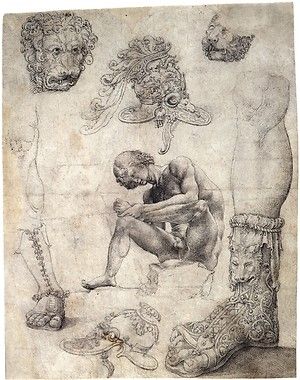




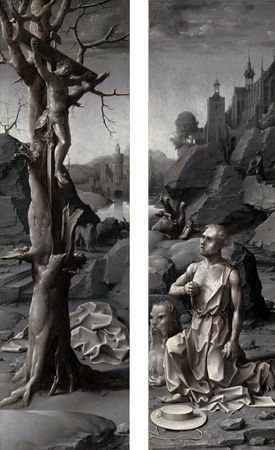



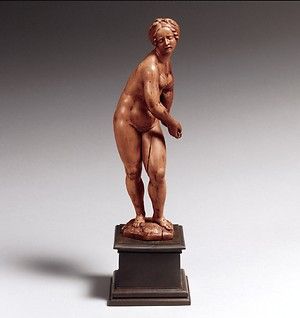





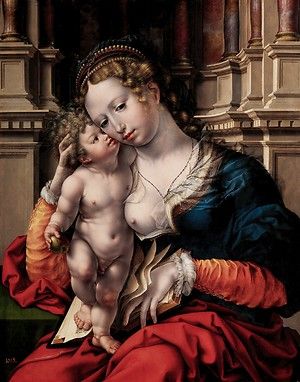
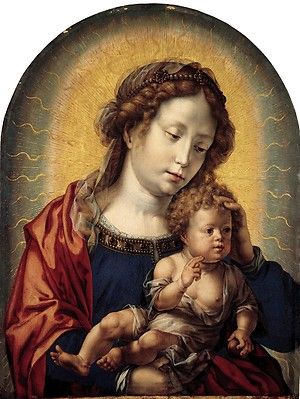





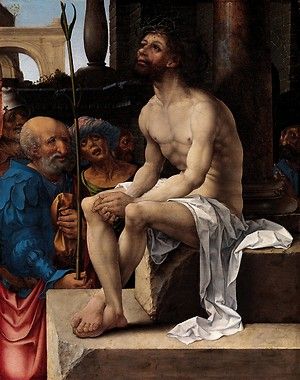





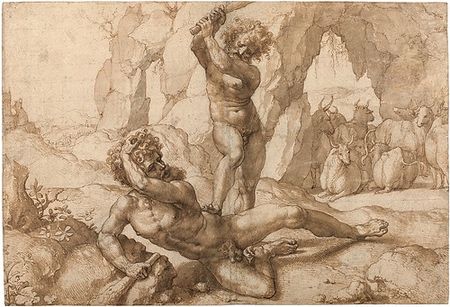
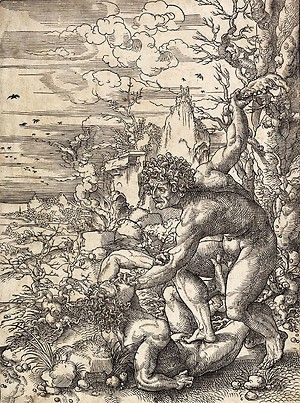


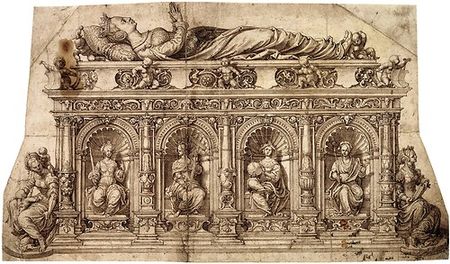

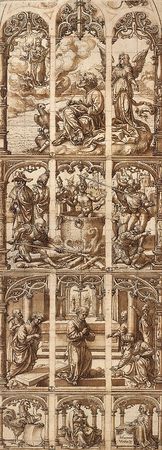




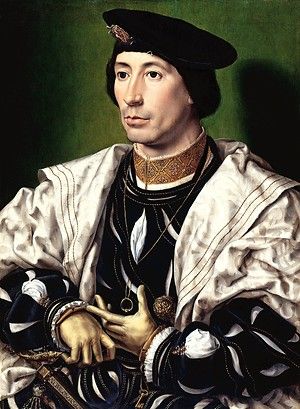



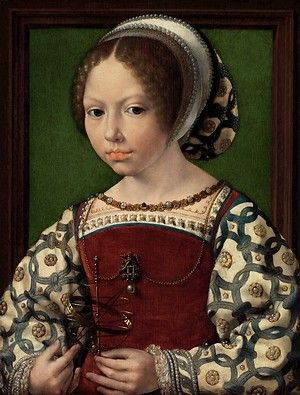


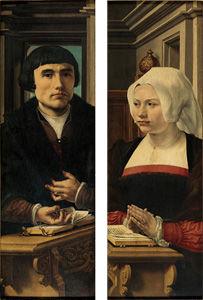
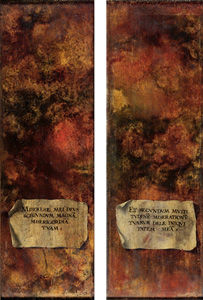



/http%3A%2F%2Fstorage.canalblog.com%2F41%2F70%2F119589%2F71222445_o.jpg)
/http%3A%2F%2Fstorage.canalblog.com%2F84%2F50%2F577050%2F40250600_p.jpg)
/http%3A%2F%2Fstorage.canalblog.com%2F55%2F47%2F119589%2F94344627_o.jpg)
/http%3A%2F%2Fstorage.canalblog.com%2F19%2F64%2F119589%2F121786201_o.jpg)